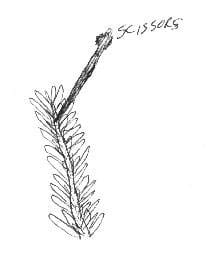Profile of Yew Bonsai
The Yew tree has become one of my favourite species of Bonsai to work upon. This is mainly due to the ease of styling and the dramatic contrast between the lush green of the foliage and the beautiful reddish bark that they purvey.
The two main species of yew commonly used for Bonsai are:
TAXUS ‘baccata’ – “English Yew” – green leaves lighter in colour to its Japanese counterpart.
TAXUS ‘cuspidata’ – “Japanese Yew” – dark green leaves with light green undersides.
Both trees can bare fruit with a red aril.
There are also many cultivars off these two main species, such as the variegated variety TAXUS baccatta ‘Fastigiata Aureomarginata’, the goldern Irish Yew. It can be very hard to create into Bonsai because of its upward pointing branches. You will need to wire down constantly and, the yellowish rim to the leaves gives a sickly chloritic appearence to the design.
N.B; As many of you will know the Yew family is poisonous so take care with children etc. when pruning.
One of the biggest considerations when it comes to pruning Yew trees is their apical dominance. You should regulate this by pruning strongly around the top to prevent the top branches swelling out of proportion to the trunk and by making the energy go to the basal branches, which will intern promote more swelling around the base of the trunk. This can be sped up by growing sacrifical branches as well. The species will also bud readily on old wood around existing nodes when vigorous and healthy, which can be very benefical when working upon old collected trees. Due to this readiness in budding they are very forgiving to poor pruning, but I will try to explain the correct pruning regimes to stop die back and damage to the tree.
Pinching
In the spring time the trees buds will burst into life producing light green shoots of growth, which should be allowed to extend to about 3-4 cm before pinching. This task is done by using the finger and thumb (not the nail) by supporting with one hand the base of the new shoot while plucking in half with the other. Now if the desired length of the pad has already been achieved it is possible to completely remove the new growth tip shoots to make the tree back bud in the inner of the foliage pad providing the tree is healthy. This procedure can be carried out as the tree puts on its growth extensions, but if you leave the growth over a period without pinching, the shoots will harden off and become impossible to pinch, so you will have to prune with scissors.


